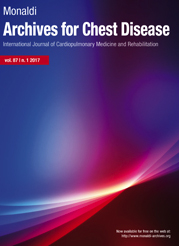Downhill: a new rehabilitation frontier. A systematic review of the literature
All claims expressed in this article are solely those of the authors and do not necessarily represent those of their affiliated organizations, or those of the publisher, the editors and the reviewers. Any product that may be evaluated in this article or claim that may be made by its manufacturer is not guaranteed or endorsed by the publisher.
Authors
In the last few years, we have seen the gradual spread of a new treadmill training modality, which involves walking not on the flat but downhill, also known as "downhill". This review aims to qualitatively assess the efficacy of downhill treatment on different patient populations and outline treatment routes for future efficacy studies. We searched five different databases: MEDLINE, SCOPUS, Web of Science, PEDro, and LILACS for studies to include. Only randomized controlled trials (RCTs) published in English were considered. PEDro scales and Risk of Bias 2 (RoB 2) assessment were used to evaluate the risk of bias. Forty-one RCTs were included, and three articles remained to be analyzed; the included studies showed 110 participants for three RCTs; of these, two were performed on patients diagnosed with chronic obstructive pulmonary disease (COPD), while one was for treating people with multiple sclerosis (MS). The outcome measures used in the studies were the pulmonary function test, the cardiopulmonary exercise test, the 6-Minute Walking Test, and the St. George Respiratory Questionnaire. In patients diagnosed with COPD, downhill training appears effective on functional capacity and symptoms of dyspnea and fatigue, while in people with MS, it increases strength and activity performance when compared to other walking training modalities. RoB 2 tool shows good methodological quality for all studies included in the review; when evaluated with the PEDro scale, all presented a score of 8. Downhill could be such an effective, safe, and feasible eccentric training modality that it can be considered a new rehabilitation strategy that could be implemented for patients with low exercise tolerance.
How to Cite

This work is licensed under a Creative Commons Attribution-NonCommercial 4.0 International License.






